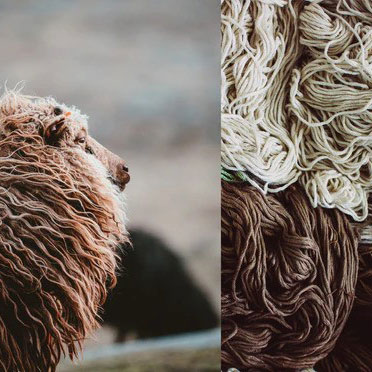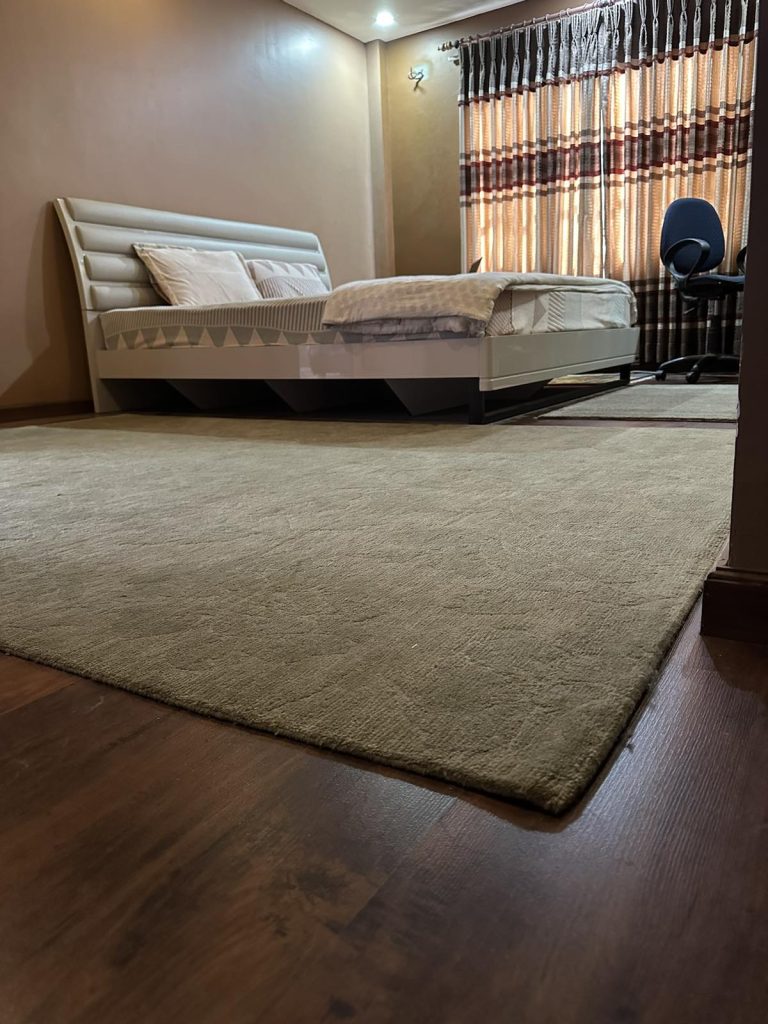

Wool is a natural fiber that is known for its durability, resilience, and texture. It is considered one of the finest materials for handmade carpets due to its ability to hold color and resist stains. Wool is sourced from a breed of sheep that live in high-altitude regions, where they grow thick, strong wool to protect themselves from harsh weather conditions. Carpets made from wool are not only beautiful, but also sustainable and eco-friendly. The natural lanolin in the wool helps to repel dirt and dust, making these carpets easy to clean and maintain. Wool is hand-spun and hand-dyed, which gives each carpet a unique, one-of-a-kind look and feel. Investing in a handmade carpet made from wool is not only a wise choice for your home, but also for the environment.

Using Wool in handmade carpets offers several distinct advantages:
Wool is known for its exceptional quality and durability. The high altitude and harsh climate of the region result in sheep that produce wool with strong and resilient fibers. This translates to carpets that can withstand heavy foot traffic and last for generations.
Wool fibers have a natural bounce-back resilience due to their unique structure. This means that the fibers can recover their shape after being compressed or walked on, reducing the appearance of wear and tear.
Wool often has a natural sheen or luster that can give carpets a luxurious and elegant look. This sheen reflects light in a pleasing manner, enhancing the overall aesthetic appeal of the carpet.
Wool fibers can absorb and release moisture, helping to maintain balanced humidity levels indoors. This can contribute to a more comfortable and healthy living environment by preventing the buildup of excess moisture that can lead to mold and mildew.
Wool fibers have a natural resistance to stains due to their structure and the presence of natural oils. This makes cleaning and maintaining carpets made from wool easier compared to synthetic materials.
Wool fibers can absorb and release moisture, helping to maintain balanced humidity levels indoors. This can contribute to a more comfortable and healthy living environment by preventing the buildup of excess moisture that can lead to mold and mildew.
Despite its durability, wool is also quite soft and comfortable underfoot. This makes carpets made from this wool particularly inviting and cozy to walk on or sit on.
Wool is known for its insulating properties, and wool is no exception. Carpets made from this material can help regulate indoor temperatures by trapping heat during colder seasons and providing insulation against heat during warmer seasons.
Wool is a renewable and biodegradable resource. Choosing carpets made from this material supports sustainable practices and reduces the environmental impact associated with synthetic materials.
Carpets made from wool often carry cultural and traditional significance, as they are crafted using techniques passed down through generations. These carpets can represent the artistry and heritage of the region where they are made.

It is valued for its combination of durability, comfort, aesthetic appeal, and cultural significance, making it an excellent choice for crafting high-quality handmade carpets.
Both types of wool are excellent choices for carpets, but the decision ultimately depends on your specific needs, aesthetic preferences, and budget.

Handmade carpets, also known as hand-knotted carpets, are a type of floor covering that is crafted by skilled artisans using traditional techniques passed down through generations.
The Hattu Rugs. Copyright © 2025. Developed & Powered By Keon InfoTech